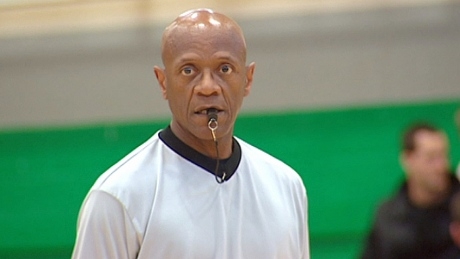Will NCAA Refs Really Crack the Whip?
Published on 1-Nov-2013 by J Square Humboldt
Share this article

The NCAA has decided its hoops fans prefer pinball scores.
This past spring, its rules committee took a hard look at the gradual decline in scoring over the past few seasons and decided the Big East and Big Ten were leading the college game down too rugged a path with their take-no-prisoners style of play. Last season, the average score for a Division I team's 40 minutes of blood, sweat, and tears was 67.5 points.
There are surely many reasons for this trend, very few over which the NCAA has zero influence. But it's decided to take action on a factor it thinks it can regulate.
Physical play.
This conclusion was the result of pedantic studies that offered numerous observations, but apparently one caught the NCAA's fancy:
The most significant predictors of attendance are percentage of baskets assisted, three-point percentage, and points scored per possession.
So it decided to make it easier for teams to score. As of this coming season, the referees have been instructed to warm up their whistles. Look for fouls to be called in the following circumstances:
- Hand checking, which of course includes its morphed relation, forearm checking;
- Double hand checking, which apparently is so distinctive from single hand and forearm checking, it gets a category all its own;
- Jab checking, which is apparently distinct from single- and double-hand checking as well as forearm checking and will apparently provide respite for kidneys throughout the length and breadth of Division I; and
- Arm bars, which is apparently a distinctly different action than forearm checking.
Well, after all, the NCAA is part of academia, which clearly precludes its rules from simply stating that defensive players need to keep their bloody hands to themselves.
Two other tweaks might actually eliminate more flopping:
- If an offensive player is merely on an upward motion to the hoop and contact is made, it's a blocking foul; and
- If a defender moves to create a blind-side double-team on a player with the ball, no charge is going to be called if he gets knocked down.
Sounds like the winning teams will have deep benches, great free-throw shooters, and nicknames like Dunk City.
All this could take some acclimation. One indication that it won't be easy is the recent scrimmage between Xavier and Ohio. They combined for 71 fouls and 91 free throws.
And that is supposed to boost attendance?
The real question will be how long the referees buy into the new interpretations. Perhaps baseball's umpires will offer a clue.
MLB decided to standardize the National League and American League strike zones when the Commissioners office took over authority of umpiring from the league offices. This enabled technology such as Pitch F/X to create visual monitors that have become common on TV screens. They're the boxes that track pitch locations:

Oakland's Seth Smith just got rung up on CB Bucknor's version of the standardized strike zone, which just might have something to do with Justin Verlander's reputation as a strikeout pitcher. Proof yet again that intention is one thing, but implementation is quite another.
Only the most sadistic of referees is going to call a season's worth of 71-foul games. And if the NCAA hoopsters pushing at the edges of the new rules and rejoice in 80-point outputs, the NCAA's Big Dance will again feature the sort of close contact that chaperones might be able to curb for a while but won't be able to stop.

